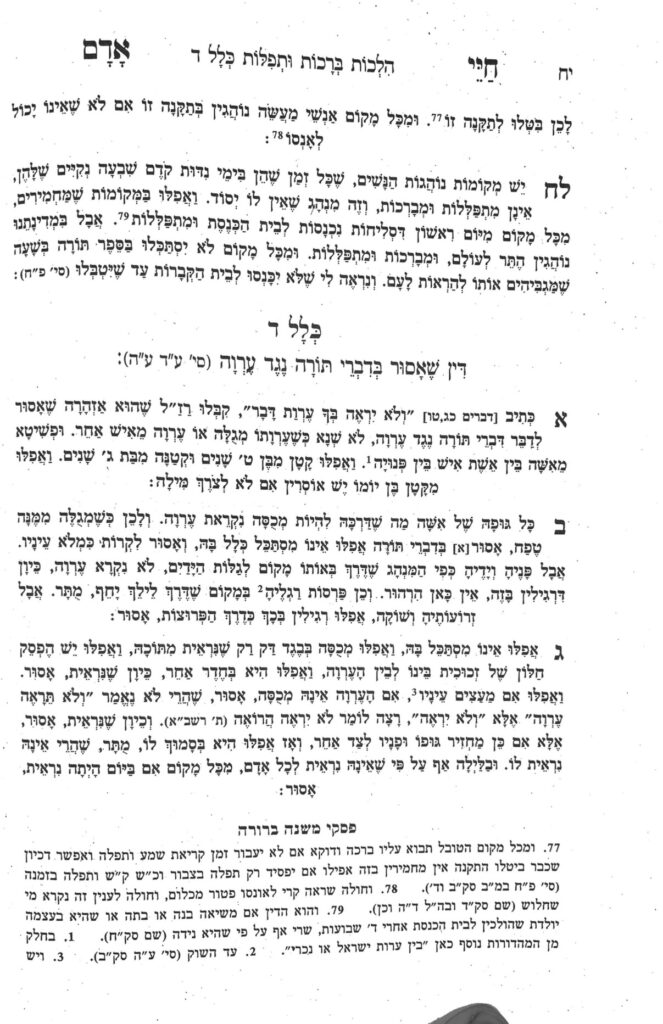We are beginning siman 2. The Chayei Adam writes that any part of the body which is normally covered is considered ervah. Therefore, if a tefach or more is uncovered, one cannot recite torah or tefillah in its presence. The definition of a tefach is a tefach by a tefach; i.e., three inches by three inches. This halacha is not discussing a person’s responsibility to cover themselves; meaning, one cannot infer from this halacha that it is muttar lechatchilla to have openings or holes in one’s clothing. However, as it relates to the issur or ervah, if the area is less than a tefach by tefach, one can still recite torah or tefillah.
The issur applies even if one is not gazing at the person or place which is uncovered.
As we learned yesterday, there is a difference between the primary ervah and other parts of the body. Regarding the primary ervah, even less than a tefach is a problem, both on a man or woman.
The issur applies as long as the person is in eyesight.
The Chayei Adam writes that a woman’s face is not ervah, and, if it is a place in which it is normal for a woman to bare her forearm, the forearm is not ervah either. The Chayei Adam explains that since it is normal for that part of the body to be uncovered, we are not concerned about hirhur. This explanation fits well with the understanding that other parts of the body (everything other than the primary ervah) were made assur by Chazal in order to avoid hirhur. Thus, in a situation in which there is not concern for hirhur, it is muttar to daven or learn.
The Chayei Adam continues, and writes that similarly, in a place where it is normal to go barefoot, uncovered feet are not considered ervah either. However, a woman’s upper arm and shok are assur, even if it is normal for people to walk around with those parts uncovered. Since those areas are closer to the inner part of the body, which is more attractive, Chazal made them assur.
With this psak, the Chayei Adam answers the often-asked question of whether the reality that many people walk around covering much less of their body changes the halacha. We see the Chayei Adam holds it does not, as the societal norms will only affect the parts of the body further away from the inner part of the body.
We need to define the word shok (lit., thigh). The Mishnah Berurah understands it refers to the upper leg, from the knee and above. Thus, according to the Mishnah Berurah, in a place where it is normal for women to walk around with the lower leg uncovered, there is no issue of ervah vis a vis learning and davening. However, there is much discussion in halacha whether the shok includes the lower leg as well. According to those who hold it includes the lower leg, a woman can cover it with socks or stockings. We will discuss later how diaphanous clothing can be and still be considered a covering.
Summary
- If any amount of the primary ervah is uncovered, it is assur to recite divrei torah or tefillah
- If a tefach by a tefach or more of other parts of the body of a woman are uncovered, it is assur to recite divrei torah or tefillah. Chazal gave those areas a din of ervah.
- The issur applies as long as the person is within eyesight of one who wishes to daven or learn.
- The face is not ervah. A forearm, lower leg or foot is not ervah only when the local custom is not to cover them. Any other parts of the body are always considered ervah regardless of the local custom.



